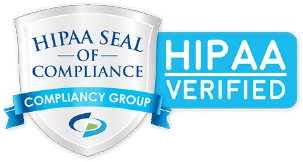Manufacturers are currently facing significant operational challenges. Many organizations were forced to temporarily close due to the COVID-19 pandemic, creating even more demand for those that remained open. The goal, however, remains the same: to raise brand awareness, increase leads, foster customer loyalty, and ultimately grow and scale manufacturing and businesses. As the latest technology is paving its way in the form of IoT, digital transformation, AI, Big Data, augmented reality/VR, and much more, many manufacturers are leaving behind the basics of IT. In this article, we are going to have a look at many such elements of IT that should be considered as they are going nowhere!
IT Support and Helpdesk
The use of a multi-channel help desk that can handle requests via email, phone, and live chat, convert them into tickets, and categorize them according to your needs. You can use this innovative search feature to locate your priority tickets, mark them, and have them resolved as soon as possible. Using a helpdesk ensures that all your communication is taken care of from a single intuitive interface.
There will be repairs, returns, and damages when shipping parts. When your partners email you about such issues, your help desk records them as actionable tickets in the system, which your staff can investigate and go ahead and take the required action. Having cluttered inboxes and massive data spreadsheets are a thing of the past! Get an IT support system to manage your manufacturing business online if you haven’t one already!
Data Security
Cyber security measures for manufacturing firms should include more than just anti-virus software and other end-point security measures. Manufacturers should also implement some of the measures that can cover the fundamentals of cyber security for them. Lack of email domain security can be disastrous for manufacturing firms that serve as vendors for a variety of other businesses. Email spoofing, VEC attacks, BEC attacks, and spear-phishing attacks can all be used to accomplish this. Email domain security tools come in handy in such situations. Incident Response Tools can be useful in detecting cyber-attacks. Also, a phishing incident response tool can help employees report suspicious emails and remove malicious emails from their inboxes.
Predictive Maintenance
Predictive maintenance (PdM) is the process of monitoring the performance and condition of equipment during normal operation in order to reduce the likelihood of failure. Predictive maintenance, also known as condition-based maintenance, has been used in the industrial world since the 1990s. The goal of predictive maintenance is to be able to predict when equipment will fail and then prevent the failure through regularly scheduled and corrective maintenance.
The cost-saving benefits of predictive maintenance include minimizing planned downtime, maximizing equipment lifespan, optimizing employee productivity, and increasing revenue. Another benefit of predictive maintenance is its ability to transform both a maintenance team and an organization, as implementing PdM allows asset managers to improve outcomes and better balance priorities like profitability and reliability.
The advancement of technology has resulted in an increase in the adoption of complex information technology systems.
Patch Management/ Software Updates
Many software developers regard patch management as yet another time-consuming security task that obstructs the development process. Because application vulnerabilities will continue to be the most common external attack vector, patch management is a critical component of the vulnerability management process that organizations cannot afford to overlook.
A patch is a small fix for a security vulnerability or bug in a software component. It’s a band-aid for a software version that your company is using. To avoid sleepless nights and disrupted systems, we must address patch management head-on and invest in a patch management policy that checks all of the boxes. Automated tools provide efficient solutions for ensuring that all steps in your patch management process are completed without slowing development.
Email Marketing for Manufacturers
Email marketing for manufacturers is undeniably a powerful tool for reaching out and building brand awareness. It is also cost-effective for the campaigner. After putting in the time and effort to research, develop, and market a product, it is vital to generate market buzz. Email Marketing is a competent way to do so.
Email marketing is a targeted marketing method that requires less investment and yields more positive results. It is very simple to track both sent and opened emails. The number of emails sent can be monitored and optimized. This helps develop a better strategy for future campaigns. The overall campaign can be easily measured.
Data Storage and Management
When it comes to today’s digital world, the term “Data” is crucial. Data management and storage are becoming increasingly important in all types of businesses and educational institutions, regardless of the size of the organization or the nature of the business.
Data storage refers to the collection of techniques and innovations that are used to capture computerized data on electromagnetic, optical, or silicon-based storage media. Businesses use a variety of data storage technologies, including hard disc drives, solid-state drives, and cloud storage, among others.
Remote Productivity
Owing to the worldwide pandemic, every industry is going remote. Businesses are trying their best to maintain their productivity while most of the employees are working remotely. A growing number of organizations are considering remote work as a long-term solution following the pandemic, citing benefits such as increased productivity and the ability to attract talent. Given the existing communication and performance management technologies in most industries, the transition from office to remote work has been relatively smooth.
To make the transition to remote production monitoring, machine and operator data must be collected and contextualized in real-time so that managers can gain insights into production regardless of their location. It is far more efficient to provide fewer onsite workers with the tools and information they need to make decisions than to have the entire workforce onsite simply to communicate information.
Remote work emphasizes the significance of real-time, automated communication and notifications to guarantee that the right information reaches the right person at the right time.
This involves exploiting real-time production data to provide automatic notifications for manufacturers. This can be as basic as informing an operator when a machine fails, or as complex as predicting an approaching machine tool failure and automatically issuing the work order in a computerized maintenance management system (CMMS).
Manufacturers will be able to enable lights-out factories driven by automation as their data maturity and remote work compatibility improve, saving the highest value activities for onsite production staff. Taking a few measures will ensure that the work doesn’t stop, be it onsite or remote!
Focus on Data Control and a Centralized Record System
A centralized records center is one in which all physical papers are kept in one place. The records and information management department staff is in charge of the location. The size of the records department will be determined by the organization’s size.
A consolidated records center has numerous advantages. For starters, it stores all tangible papers pertaining to a specific case in the same spot. If end users require a file reference, they contact the records department employees via an online portal or email service. The file is then checked out to the final user. The file’s whole chain of custody is recorded; thus, the file’s location is always known.
Second, a consolidated records center provides increased security. For example, if the entry is locked, only workers from the records department have access to the files in the records center. This strategy gives you more control over the physical documents.
Finally, all end users are provided with documentation outlining uniform departmental processes. These processes cover subjects such as operating hours, file requests, and delivery periods.
Summing Up
With the growing rate of digitalization, almost all industries are becoming more tech-savvy. When it comes to manufacturing especially, it’s important you get the tech support right. Ensuring the basics of IT is very important. And to make your task easier, this article has all the important points that you should consider during the digital growth of your manufacturing venture!






